#sergeant major johnson
Text
scattered halo headcanons (for the funnies)
#. Johnson and Master Chief see each other as sibling figures, and bicker constantly whenever they're both off duty at the same time and in each other's presence.
#. Fred is the one to patch up the other three in Blue Team whenever they fuck up and get themselves hurt in the process of doing something stupid.
#. Cortana thinks about Noble Six sometimes. She never tells Chief there was another Spartan before him she wanted to partner with. She thinks they might've gotten along anyway.
#. Rtas is the only one allowed in Thel's private quarters. Normally it involves a lot of shit talking other Covenant members they secretly hated or Thel doing mundane things while Rtas watches over him silently.
#. Chief really loves the color green. Even the ugly shades. Kelly thinks he's out of his mind for it.
#. Thel is silently terrified that Chief will hate him if he finds out that he was behind Reach. When Chief finds it out, he brings it up to Thel, and when he sees Thel stiffen, quietly tells him that it wasn't his fault that the Prophets manipulated him and everyone else in the Covenant.
#. Rtas and Thel are extremely protective of each other, and become extra aggressive when they get separated during battle.
#. Blue Team treats Cortana like she's family. It makes her extremely happy every time, without fail.
#. Buck catches himself missing his old team whenever he's alone. He thinks about Vergil a lot too. He doesn't tell the others about this. (Locke knows anyway, and has tried multiple times to arrange for them to work together so Buck can see them again. It never worked out.)
#. Thel accidentally picked up human phrases and slang when he fought on Earth. He uses them occasionally, and it confuses the fuck out of the other sangheli.
#. Johnson met Blue Team a few times and promptly said he understood why Chief was "like that" when he saw them bicker. Linda laughed herself to tears and Chief practically pouted about it.
#. Locke is really good at logic based puzzles. Vale enjoys teasing him for it and receives a blank, yet somehow incredibly disappointed stare every time.
#sources:#halo#halo reach#characters:#master chief / john 117#thel vadam / the arbiter#rtas vadum / shipmaster#sergeant major johnson#frederic 104#linda 058#kelly 087#noble six / b312#cortana#edward buck#jameson locke#olympia vale#post type:#headcanons#posted by:#znmjr 🦈
169 notes
·
View notes
Photo




Halo 2: Anniversary - Halo: The Master Chief Collection (2014)
#2014#gif#gaming#science fiction#Halo 2: Anniversary#Halo 2#Anniversary#Halo#The Master Chief Collection#Sergeant Stacker#Marcus Stacker#Butkus#Fones#Walpole#Master Chief#John-117#Spartan#Cortana#Miranda Keyes#Sergeant Major Avery Junior Johnson#Avery Johnson#UNSC#Covenant#Kig-Yar#Battle Of Mombasa#Mombasa#Kenya#Earth
206 notes
·
View notes
Photo

After the girls - this week is all about the boys (and men) of Good Omens. Please mind the tags, rating and CW.
My inbox is open for suggestions, ideas and recs for stories that focus on supporting characters (as in, Aziraphale and Crowley are not the main ones). Self recs are encouraged!
Planned Obsolescence by HopeCoppice - 484 words, rated G, focusing on Newt and Pollution.
Summary: Newt is already having a bad day. This might as well happen.
Sandalphon Meets His Match by Quannon - 4.2K, rated G, focusing on Sandalphon, R. P. Tyler, Aziraphale and Crowley. cw - vaguely implied violence.
Summary: Sandalphon takes punishing Aziraphale and Crowley into his own hands with unexpected results.
Dog by EmaZuro - 466 words, rated G, focusing on Adam Young, Dog and god.
Summary: Basicaly short story based on prompt from Good Omens Inktober. Dog and his master go for a walk and God gives you an advice.
Dick Turpin by @supergeek21 - 445 words, rated G, focusing on Newt, Anathema and Dick Turpin.
Summary: An ode to the love between an awkward boy and his three-wheeled car.
A modern milkbottle by nightbloomingcereus - 497 words, rated G, focusing on Witchfinder Major Milkbottle and Sergeant Shadwell.
Summary: Witchfinder Major Milkbottle has finally returned. But there have been some changes in the Witchfinder Army since he was last on active duty.
Run And Tell All Of The Angels. by Lanna Michaels (lannamichaels) - 2.3K, rated G, focusing on Adam Young, Greasy Johnson and Warlock Dowling. cw - surprise pregnancy.
Summary: The bitter blood feud between the Youngs and Johnsons of Lower Tadfield ended with the arranged marriage of their children. In which there is a pregnancy, a dashing rich American, and Greasy Johnson wishes someone would pay him to go away.
Sleep So Sweet my Darling Boy, You Will Rule When Earths Destoryed by notebooksandlaptops - 1.6K, rated G, focusing on Warlock Dowling and Adam Young.
Summary: Perks of being The Destroyer of Worlds, Angel of Darkness, Master of the Pit, Spawn of Satan on High, the Anti-Christ: the ability to control the weather, always getting exactly what you want for Christmas, your favourite couples on TV mysteriously ending up together and a man in your bed who had the weirdest upbringing because two dumbass celestial beings thought that he was you. Draw backs of being The Destroyer of Worlds, Angel of Darkness, Master of the Pit, Spawn of Satan on High, the Anti-Christ: Occasional Nightmares about who you could have been. Good job that Warlock is there and if Adam needs a lullaby, well, Warlock's got his childhood Lullaby Nanny taught him to hand...
Home For the Holidays by WaldosAkimbo - 1.3K, rated T, focusing on Lesley the International Express Man and Maud.
Summary: A slice of Lesley and Maud and what they do for Christmas.
What We Do in the Dowling Estate by doomed_spectacles - 2K, rated T, focusing on Mr Harrison, Mr Cortese and Adam Young.
Summary: A film crew follows Mr. Harrison and Mr. Cortese, private tutors hired to educate Warlock Dowling, the son of an American Ambassador.
His Master's Voice by @fenrislorsrai - 498 words, rated T, focusing on Dog and Adam Young. cw - unspecified traumatic things happen to people.
Summary: Dog lives a long and happy life.Bodies are optional. He's not going back to Hell just because he's dead. His place is by his Master's side and always will be.
Bonus - master list with all past recommendations!
Authors - if you wish that your Tumblr account will be tagged, instead of the AO3, please comment or DM me the handle. Thanks :)
Thanks for reading, and remember - sharing is caring!
#good omens#good omens fanfiction#weekly spotlight#ngk recs#newt#pollution#sandalphon#r. p. tyler#adam young#dog#god#dick turpin#major milkbottle#sergeant shadwell#greasy johnson#warlock#warlock dowling#Lesly the International Express Man#maud#mr harrison#mr cortese
13 notes
·
View notes
Text
Happy birthday to Sergeant Major Avery Johnson!
Today is his -451st birthday!

Johnson was born and raised by his maternal aunt in Chicago, who kept him in tidy hand-me-downs and dutifully brought him to church. He enlisted in the UNSC when he was nineteen, believing the Insurrection to be a threat to innocent people. He quickly stood out among his peers and was hand-selected for the newly-instituted ORION project, an attempt at creating a new form of biologically enhanced soldiers to quell the Insurrection.
Avery underwent the training and augmentations, well-exceeding his superiors' expectations. However, the program as a whole was not the success the UNSC was hoping for, and was deactivated, though ORION would be used as the blueprint of the SPARTAN project. Johnson was reassigned to the marines.
He was then deployed to Tribute, where he failed to prevent an Insurrectionist terrorist from blowing up a diner, leading to several dozen civilian deaths. These events left him shaken, and he returned home to Chicago, only to find that his aunt had died. He spiraled, falling into a drinking binge and only recovering when a recruiter stumbled upon him in a gutter. The recruiter convinced Johnson to reenlist, and he was deployed to Harvest.
While on Harvest, the UNSC made contact with Kig-Yar, the first ever interaction between humanity and the Covenant. However, peace quickly failed, and he was involved in the very firsr battles of the Human-Covenant war.
This early experience would prove invaluable, and he was deployed on several key missions following these events. During OPERATION: SILENT STORM, he met Blue Team for the first time, and they earned his respect, with Johnson backing up John as leadership became accustomed to the Spartans. He also helped protect them when he accurately deduced that the Spartans were being targeted by Hector Nyeto.
Johnson continued to serve all the way up to the fall of Reach and the discovery of Installation 04. When the Covenant attacked the Pillar of Autumn, Johnson, along with the rest of the crew, landed on the Halo. Johnson and Keyes investigated intel from a captured Sangheili about a weapons cache on the ring. They found the Flood instead. Johnson survived as the Flood infected his squad and ultimately survived Halo's destruction when he was later discovered by Master Chief.
Following these events, Johnson received a promotion and Colonial Cross for his bravery on Halo, but the award ceremony was cut short when the Covenant attacked Earth. After chasing the Covenant forces off of the planet, Johnson and the In Amber Clad's crew discovered a second Halo installation.
He joined Commander Miranda Keyes to the Halo in search of the activation index to prevent the Covenant from firing the array. However, they were ambushed by Arbiter Thel 'Vadam and taken hostage by Tartarus and his Jiralhanae.
Keyes was brought to the control room to activate the ring while Johnson was about to be executed until they were interrupted by an attack from the Arbiter and the newly-formed Covenant separatists. Johnson then convinced Thel to join forces to stop Tartarus from activating the ring, coordinating the first cease-fire between their species.
After learning the purpose of the Ark and the location of the portal on Earth that would take them there, Johnson, Keyes, and Thel raced back to warn Earth of the coming Covenant invasion. Johnson followed Truth after helping to coordinate a joint UNSC-Sangheili mission to the Ark.
Johnson and his squad were overwhelmed by the Covenant forces at the Citadel. His squad was killed, and he was taken hostage again because the Halos can only be activated by a human. Truth attempted to use Johnson to activate the Halo array, but was stopped by Keyes, who planned on killing Johnson and herself so there would not be humans for Truth to use. However, she hesitated, and Truth used the opportunity to kill her. His victory was short-lived, with Master Chief and the Arbiter arriving shortly thereafter, killing Truth and preventing the rings from firing.
With the pressing danger gone, the UNSC and Sangheili forces focused on Flood containment. Following Cortana's plan, they decided to destroy the partially-built replacement for Installation 04. While Guilty Spark initially agreed with this action, he did not realize that the UNSC intended on destroying his replacement installation--he thought they were going to activate the ring when it was complete. When Johnson corrected him, Spark turned on them, killing Johnson with a sentinel beam.
The loss of Johnson was mourned widely, especially for John but also by Cortana and Thel, who both expressed their condolences. At Johnson's request, John "kicked [Spark's] ass" and activated the ring.
86 notes
·
View notes
Text


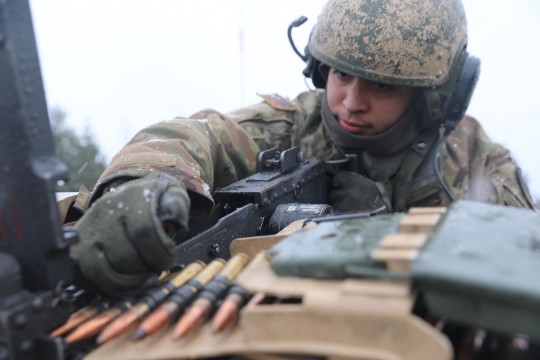
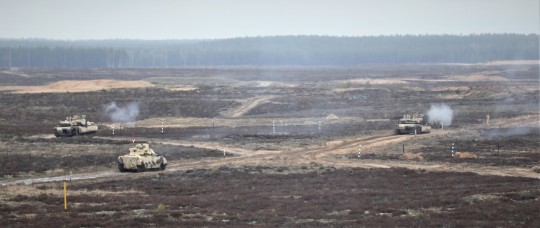



Soldiers with the 1st Battalion, 9th Cavalry Regiment from Fort Hood, Texas and multinational partner forces engage in a Combined Arms Live Fire Exercise (CALFEX) that was attended by the U.S. Emassador to Lithuania, Robert Gilchrist, on Feb. 12, 202… (Photo Credit: U.S. Army)
PABRADE, Lithuania - Soldiers with 1st Battalion, 9th U.S. Cavalry Regiment from Fort Hood, Texas, working side by side with multinational and allied forces, concluded their Combined Arms Live Fire Exercise training Feb 13, 2020.
Dutch artillery, Croatian mortar, Lithuanian and Norwegian fire support and the Baltic Air Police were some of the major assets involved in the execution of this enormous military exercise.
"A successful CALFEX is when my company commander walks out of here with a standard operating procedure and every single one of my leaders, whether it's a tank commander, a Bradley commander, a squad leader, a team leader…They walk out of here understanding their SOP's, having codified the lessons that they've learned throughout the entire train-up," said Lt. Col. Stephen Johnson, commander of the 1-9 CAV.
This large scale combined exercise involved assets from across the entire battlefield spectrum operating in a seamless, synchronous fashion.
Mortar teams working cooperatively were no exception.
"The goal for mortars here is to enable the maneuver elements in the company CALFEX to be able to get onto their objectives with ease," said 1st Lt. Alexander Shuler, a 1-9 CAV mortar platoon leader. "The thing that's really cool about working with the European nations, including Croatia, is that they're so used to working with other nations. A large part of us coming here to Europe is building upon that interoperability."
Indeed, Croatian Soldiers were an essential component of the mortar exercises as they worked closely with 1-9 CAV Soldiers throughout the CALFEX.
"The non-commissioned officers that we work closely with were really helpful," said 2nd Lt. Ante Validzic, with the 3rd mechanized infantry of the Croatian Land Forces. "They assisted us with everything we needed. If we combine our strengths, and work on our weaknesses, we can be strong together."
Training in Lithuania offered the Soldiers many tactical benefits that are not as readily available back in the United States.
"One of the great things about the 1-9 being up here in Lithuania is that they have the training facilities right here at their doorstep," said Brigade Command Sgt. Maj. Alexander Yazzie. "During this exercise, they had the fuelers come, they brought in ammo, they executed a Logistics Resupply Point (LRP) after contact. They were able to not only incorporate the fire maneuver, the shoot - move - communicate portion, but they incorporated the sustainment portion as well which was great because that's the first time I've seen that done in a CALFEX."
Command Sgt. Maj. Christopher Carey, the battalion command sergeant major was equally impressed with his Soldiers' ability to engage and take down potential enemy opposition.
"The one thing that really stood out to me was the violent execution of Battle Drill Six (room clearing exercise) by our infantry. There's a lot of training that leads up going into that live fire drill," said Carey. "They've trained for several weeks in preparation for this, and again the violence of action was very impressive. We're here to train and we're here to deter our adversaries. We don't have any distractors, that's our focus here."
The CALFEX is an enormous undertaking in scale and scope. This exercise allows leadership to assess and increase the military readiness and lethality of all the joint participants. Combining forces on such an enormous scale showcases our interoperability, and promotes regional stability, thereby enhancing relationships with our allies.
"We actually got to shoot gunnery with the Germans and the Norwegians, just being able to interact with them - I actually got to grade them, I got to VCE (Vehicle Crew Evaluator) them through their gunnery," said Staff Sgt. John Waite, an M1A2 B Co., 3rd platoon tank commander. "They were phenomenal. Their platforms and tank crews were amazing. They're always just thirsting for knowledge, the same as us. It's been one of the most amazing experiences during my time in the army."
The CALFEX is a very fast paced, multi faceted, strategic exercise. The ability of Soldiers to adapt and adjust to a fluid, ever changing battlefield environment is key to their success.
Of course, everything doesn't always go as planned.
"A Platoon leader's track (U.S. Bradley Fighting Vehicle) went down, just cut off on him. He worked through it, and what was great is the battalion commander let him work through it, he didn't give him the answer," said Yazzie. "So when a platoon sergeant's vehicle goes down, you have to jump track. Ultimately, he worked through it, he did really well and continued on with the mission."
Countless hours of training, endless logistics and the Soldiers' collective fighting spirit make for a very formidable fighting force that continues to protect the freedoms and independence of all within the European theater.
"This was just a world class amazing exercise, and I'm really proud of the Soldiers. Moving forward, we're going to document all the lessons learned. We're going to make sure that we don't make the same mistakes that we learned from this time, and that we can pass them off to the future leaders," said Johnson. "We all transition. We're going to switch out leaders, we're going to switch out Soldiers and they've got to be able to pick up where we left off. We're going to continue to be lethal, we're going to continue to train and continue to get better."
18 notes
·
View notes
Text
Where to Start on Halo Books: A Guide For Nerds that Want In
There's a lot of Halo, so let me tell you about a couple books I think are good places to dive in. They're all early ones, and I think any of them can serve you well depending on what you want/what sounds cool to you.
If you like starting from the beginning of things, care a lot about the origins of the Master Chief, were into Captain Keyes, or are just coming in off the TV show and would appreciate an introduction to ground yourself on the main continuity's lore because it's different, start with The Fall of Reach by Eric Nylund.
It's not the best Halo book, but it's serviceable gamer fiction, you can tell the author really genuinely cared about it, and it sure is the first one! It's a prequel to the first game, and covers the beginning of the Spartan program, the training of the young Spartans, the growth of Keyes as a captain, the origins of Cortana, and finally the eponymous fall of the stronghold world Reach itself which leads on into the game.
One thing to note: this is the oldest Halo novel, but the last revision to it was about 10 years after it came out. Try to find a copy from 2010 or newer. The old ones with Halo 1 era graphics on the cover and the xbox logo on the spine, while very vintage #aesthetic, have a couple glaring errors that got corrected later.
If the cover has this art piece on it, you're good. There's like one fiddly detail that can be different between copies of it and it doesn't matter much.
(Unfortunately, the audiobook never got updated.)
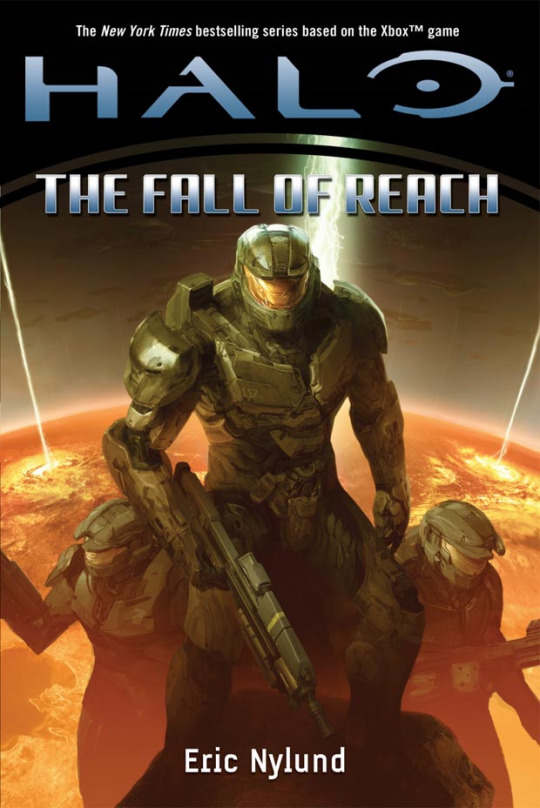
If you don't like prequels, are still to this day haunted by not knowing what happened between Halo 1 and Halo 2, want to spend quality time with the adult Spartan-IIs, you care a lot about the Master Chief as a character, and you thought Cortana and Sergeant Johnson were fun and want a book with both of them, you can start with First Strike (also by Eric Nylund.)
This one bridges the gap between Halo 1 and Halo 2. I think it can stand pretty well as an entry point if you're coming in with a good knowledge of the games anyway.
The Fall of Reach may not be one of my most favorite Halo novels (it's important but I don't enjoy reading the whole thing) but First Strike is definitely one of my favorites. If your tastes align with mine and you like what I have to say about Spartans and the Master Chief in particular, a lot of the roots of that are in here. I think it is a more coherent book than FoR.
Like FoR, this one is one of the oldest books so keep an eye on edition. (This one doesn't have many huge glaring continuity issues that I know of, though.)

If you fucking love prequels, want worldbuilding and backstory, enjoy pain and suffering, want to start even more at the very beginning, are curious about Smart AIs and/or are starving like an animal for Covenant lore, or loved Sergeant Johnson more than anybody else and don't care about Spartans, you could start with Contact Harvest by Joseph Staten.
Contact Harvest is set about 30 years before the first Halo game, and tells the story of humanity's first contact (and conflict) with the Covenant at the planet Harvest. Joseph Staten was the head writer at Bungie during the original trilogy era, and this is a very competently written book. (...Just forgive the awkward sex scene at the end.) Staten's a stronger writer in craft terms than Nylund, and he gets to unfold a bunch of foundational Halo universe lore in here. This had our first big look at the Covenant from an inside perspective, and our first good look (outside a Spartan's perspective) at what humanity was worried about before the Covenant showed up. It has a couple of Smart AIs as major characters, and I still think it is one of the best portrayals of them.
Also, it's about Sergeant Johnson and he's a cool dude.

If you read any one of these three, you can read either or both of the other two if you want to keep going. If you vibe with what Nylund's doing and get curious where he's going with it after First Strike, the next title you want is Ghosts of Onyx. If you liked what Staten laid down in Contact Harvest you will probably enjoy Tobias Buckell's The Cole Protocol, which is also heavy on the colony perspective while its Covenant chapters are about a (much younger) Arbiter.
After that, you're off the Halo lore tutorial levels and are free to do whatever you want, you'll figure it out. (Or stop, possibly. It is a regrettable quality of Halo that there are probably many places where it is wise to stop.)
But hey, while we're here.
If you don't actually care about backstory lore and just want to read a good story, you really like the tension between humans and aliens, you feel like the period right after the war is over sounds really rad, you're all about trauma and recovery, and you have somehow come to the unwise conclusion that you trust me with your life...
You could read Envoy, by Tobias S. Buckell.
Envoy is very self-contained from most of the rest of the lore, but it's really good. It's really really good. I loved it a lot. It's probably not a great place to start with no grounding at all in Halo, it comes from much later in the continuity, but... Keep that in your back pocket for later, maybe.
119 notes
·
View notes
Text
I think Sgt. Johnson was a favorite character of everyone’s for a reason. He was chipper, entertainingly brash, and just plain cool to be sure, but what I think people never really consciously absorbed was that he was a pretty kind person.
Barring the Insurrection-era character assassination ONI shit that the novel writers thought would make him more sympathetic (when really they just needed simple survivor’s guilt and his dead aunty), Johnson has always been surprisingly supportive for a marine sergeant. The major clue is his in-game dialogue.
I’ve scrounged and searched, and there’s about ONE time I could find in the games where Johnson demeans or insults someone under his command, and that’s during CE in 343 Guilty Spark when the marines are ambushed by the worst thing you can imagine.
Every other line of dialogue is a one-liner, a threat against someone trying to kill him, exposition, a friendly tease that doesn’t attack ability or identity, only actions, or a genuinely supportive speech. Every such speech he makes, he never attacks the self-esteem or emotions of his marines, only ever encouraging them and urging them to find their inner strengths. First Cutscene on Metropolis in H2, when one of the two marines suggests a retreat, Johnson doesn’t denigrate him for being scared, but gets him to find courage by pointing out the tank and Spartan who just showed up, and how he’s already had the courage to join the war, so he has the courage now to chase after a giant metal spider.
Johnson knows that humanity is on the backfoot, and that there would be no point in making people who are already certainly going to be traumatized feel even worse. The best way to keep their spirits up IS to keep their spirits up. People need heroes. No matter how directly or indirectly, his words are always supportive.
And hell, Johnson being so willingly personable is WHY humanity survived at all. Without teaming up with Thel, humanity wouldn’t have had the backing of the Separatists to finish off the Covenant. Heck, in their last scene of H2, he seemed pretty willing to even let Tartarus and the brutes join the party, even after the imprisonment and threats. And notice how after the alliance, all the “dumb bug” comments about the sangheili ceased. He knows how to make friends and show respect.
And I think in a genre so bloated with pissy, CoD-style “make the racist hard choice” American jingoism and unemotional machismo, having a character like Johnson is so refreshing.
123 notes
·
View notes
Text
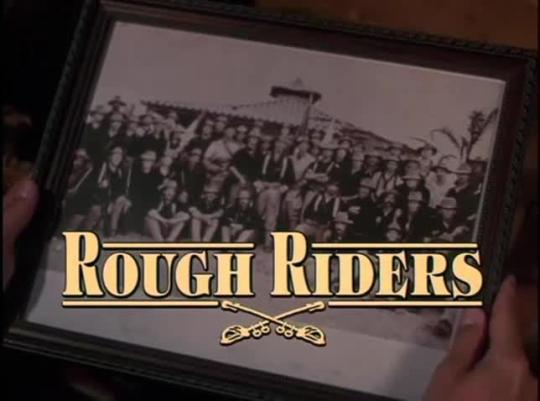

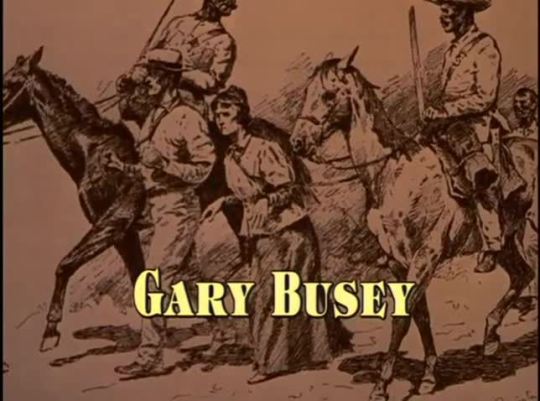
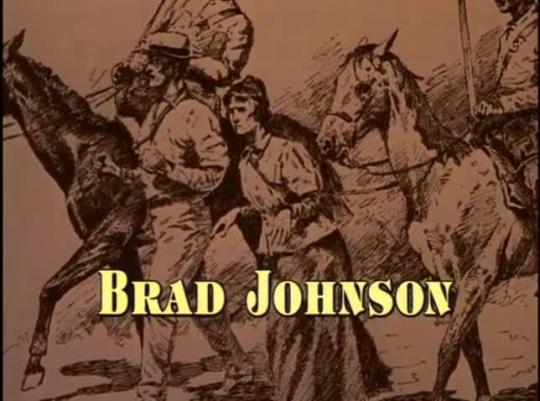


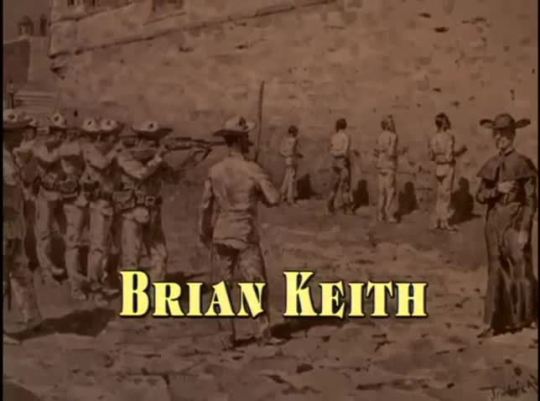

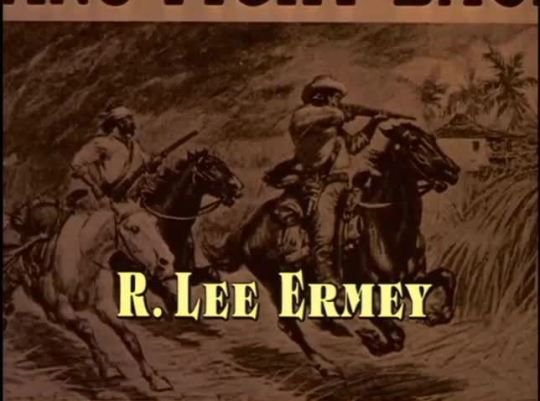

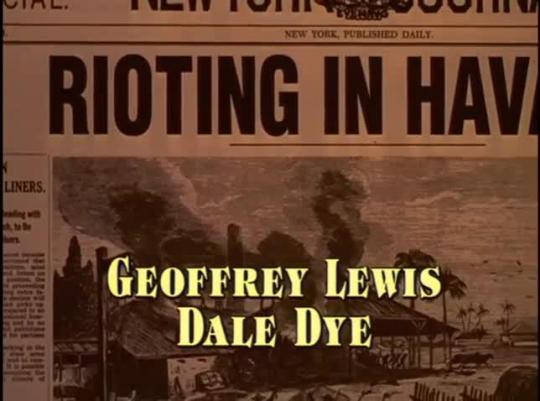
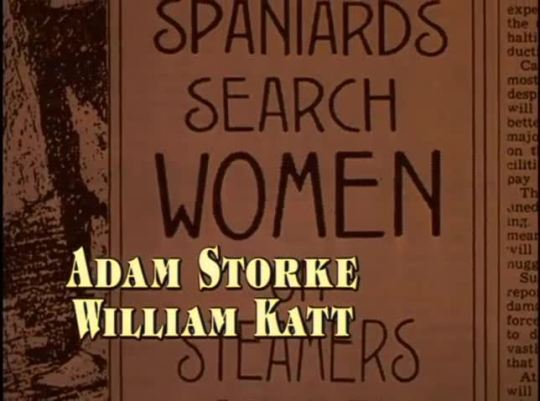





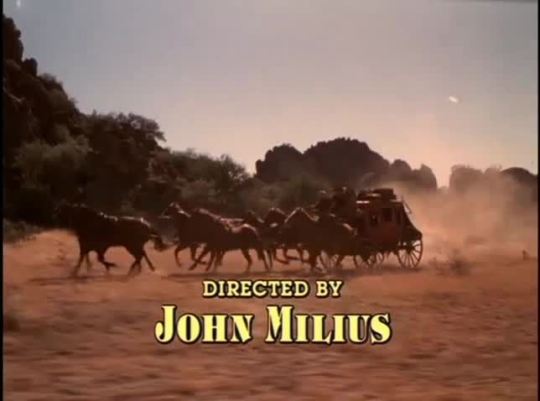
Rough Riders - TNT - July 20-21, 1997
War History (2 episodes)
Running Time: 184 minutes
Stars:
Tom Berenger as Lieutenant Colonel / Colonel Theodore Roosevelt
Sam Elliott as Captain William "Bucky" O'Neill
Gary Busey as Major General Joseph Wheeler
Brad Johnson as Henry Nash
Illeana Douglas as Edith Roosevelt
Chris Noth as Craig Wadsworth Jr.
Brian Keith as President William McKinley
George Hamilton as William Randolph Hearst
R. Lee Ermey as Secretary of State John Hay
Nick Chinlund as Frederic Remington
Dale Dye as Colonel / Brigadier General Leonard Wood
Holt McCallany as Sergeant Hamilton Fish
Geoffrey Lewis as Eli
James Parks as William Tiffany
Dakin Matthews as Craig Wadsworth Sr.
Mark Moses as Captain Woodbury Kane
William Katt as Edward Marshall
Francesco Quinn as Rafael Castillo
Adam Storke as Stephen Crane
Titus Welliver as B. F. Goodrich
Diana Jorge as Mademoiselle Adler
Eric Allan Kramer as Henry Bardshar
Angee Hughes as Sara Bardshar
Bob Primeaux as Bob "Indian Bob"
Pablo Espinosa as Major Frederick Funston
Michael Greyeyes as Delchaney
Buck Taylor as George Neville
Darin Heames as Lieutenant William Wheeler (based on Joseph M. Wheeler IV)
Marshall Teague as Lieutenant John Pershing
John S. Davies as General Henry Lawton (uncredited)
#Rough Riders#TV#War History#TNT#1997#1990's#Tom Berrenger#Sam Elliott#Gary Busey#Brad Johnson#Illeana Douglas#Chris Noth#Brian Keith
4 notes
·
View notes
Text
Collected Writings Of: John Henrik Clarke - FREE Download on Z-Library

John Henrik Clarke papers 1937-1996
Consisting mainly of correspondence, lecture notes, course outlines, writings, research material, organizational records and printed matter, the John Henrik Clarke papers are a unique archive for the study and interpretation of African and African-American history during the second half of the 20th century. As a sergeant-major in a segregated unit in Kelly Field, Texas, during World War II, Clarke helped train African-American enlisted men for mess and other maintenance duties. The collection partially records the lives of these men, changes in their personal and military status, and disciplinary procedures against them.
Biographical/historical information
Born in 1915, the oldest son of an Alabama sharecropper family, John Henrik Clarke was a self-trained historian who edited and wrote over thirty books, and was a leading figure in the development of African heritage and black studies programs nationwide.
He was a co-founder of the Harlem Quarterly (1949-1951) and an associate editor of the journal Freedomways. During the 1960s, he served as director of the African Heritage unit of the anti-poverty program Harlem Youth Opportunities Unlimited (HARYOU-ACT), and as special consultant and coordinator of the Columbia University-WCBS television series "Black Heritage."
He joined the Department of Black and Puerto-Rican Studies at Hunter College in 1969. The founding president of the African Heritage Studies Association, he was a consultant to many projects, including the Metropolitan Museum of Art's exhibition "Harlem On My Mind" and the Portal Press Springboards series, "The Negro in American History." He was awarded the Phelps-Stokes Fund's Aggrey Medal in 1994 for his role "as a public philosopher and relentless critic of injustice and inequality." John Henrik Clarke died in 1998.
Scope and arrangement
Consisting mainly of correspondence, lecture notes, course outlines, writings, research material, organizational records and printed matter, the John Henrik Clarke papers are a unique archive for the study and interpretation of African and African-American history during the second half of the 20th century. As a sergeant-major in a segregated unit in Kelly Field, Texas, during World War II, Clarke helped train African-American enlisted men for mess and other maintenance duties.
The collection partially records the lives of these men, changes in their personal and military status, and disciplinary procedures against them.|||The author's voluminous correspondence is both personal and professional. Significant correspondents include Julian Mayfield, J.C. de Graft-Johnson, Adelaide Cromwell, Basil Davidson, Cheikh Anta Diop, Hoyt Fuller, Richard B. Moore, John G. Jackson, Ezekiel Mphahlele, Alice Walker, Elliott Skinner, E.U. Essien-Udom, Robert E. Lee, Calvin and Eleanor Sinnette, Alioune Diop and the editors of Presence Africaine, and L.H. Ofosu-Appiah of the Encyclopedia Africana project.
The bulk of the correspondence is arranged chronologically.|||Curriculum material in the collection ranges from African history outlines developed in the 1960s for the HARYOU-ACT Heritage program and the Timbuctoo Learning Center, to core black studies courses at Hunter College, Cornell University, the New School for Social Research and Rider College in New Jersey.
The lecture notes (1954-1979) are supplemented by conference material and other printed matter. The HARYOU-ACT series consists of academic and administrative files of the Heritage program, which was administered by the Community Action Institute, HARYOU's central training and orientation department.|||
The Editing and publishing series consists of correspondence, manuscripts, reviews, research material and printed matter for the following books and publishing projects: "Malcolm X, the Man and His Times," "William Styron's Nat Turner: Ten Black Writers Respond," "The Black Revolution, USA," "Anthology of American Negro Short Stories," "Harlem, USA," "Marcus Garvey and the Vision of Africa," the Columbia University-WCBS-TV series "Black Heritage," and the magazine Freedomways. The Garvey files include substantive correspondence with Amy Jacques Garvey.
The Freedomways material relates in part to special issues edited by Clarke on Harlem, the Caribbean and the life of W.E.B. DuBois. Unfinished projects range from "A Treasury of American Negro Humor" (1957) to "Tales of Harlem" (1969) and a life of Patrice Lumumba. Clarke's own writings in this collection consist of early drafts of "Africa Without Tears," a book of travel writing; "Journey to the Fair," an early novel of hobo life; a compilation of short stories, and several files of articles and essays.
The bulk of the author's writings are part of a posthumous addition to the collection.|||The main organizations represented in the collection are the African Heritage Studies Association, founded in 1968 when black scholars walked out of the African Studies Association and the Universal Ethiopian Student Association, a Harlem-based nationalist group opposed to the 1930s Italian invasion of Ethiopia. Other files relate to the African Heritage Exposition of 1959, the American Society for African Culture, 1959-1963, the Fair Play for Cuba Committee, 1960, the Afro-American Scholars Council, 1972-1979, and the Schomburg Center for Research in Black Culture, 1970-1990.
Also included are correspondence and writings by Shaleak ben Yehuda of the Original Hebrew Israelite Nation of Jerusalem, a community of African-American Jews facing deportation from Israel in the 1970s, and correspondence and publications related to Jacob Carruthers and his Association for the Study of Classical African Civilizations.|||
The collection is also the site of a number of outstanding unpublished manuscripts by authors like Yosef Ben-Yochannan, Frank Chapman, Jr., Lionel Hutchinson, Edward S. Lewis, Charles Seifert and John G. Jackson.
There are also transcripts and other material from various African and Caribbean conferences. Also included are consultancy files for the exhibition "Harlem On My Mind," the Carver Federal Savings bank, and printed matter on Kwame Nkrumah, black nationalism, the 1978 Jonestown massacre in Guyana, as well as other subjects.
The John Henrik Clarke papers are arranged in fourteen series:
Personal Papers
World War II
Correspondence
Lecture Notes
Course Outlines
HARYOU-ACT
Editing and Publishing
Writings
Organizations
Consultancy
Subject Files
Other Authors
Oversized Documents
Restricted File
Administrative information
Source of acquisition
Gift, Dr. John Henrik Clarke, 10/1994 and 1999.
12 notes
·
View notes
Video
youtube
John Wayne | Rock Hudson |The Undefeated (1969) | Civil War Western Classic
The Undefeated was an American Civil War-era Western film directed by Andrew V. McLaglen. The movie stars John Wayne and Rock Hudson, it was released in 1969. Cast John Wayne as Colonel John Henry Thomas Rock Hudson as Colonel James Langdon Tony Aguilar as General Rojas Roman Gabriel as Blue Boy Marian McCargo as Ann Lee Meriwether as Margaret Merlin Olsen as George 'Little George' Melissa Newman as Charlotte Bruce Cabot as Confederate Sergeant Jeff Newby Michael Vincent as Lieutenant Bubba Wilkes Ben Johnson as 'Short' Grub Edward Faulkner as Anderson Harry Carey Jr. as Webster Paul Fix as General Joe Masters Royal Dano as Major Sanders Richard Mulligan as Dan Morse Carlos Rivas as Diaz John Agar as Christian Guy Raymond as Giles Don Collier as Goodyear Big John Hamilton as Mudlow Dub Taylor as McCartney Henry Beckman as Thad Benedict Víctor Junco as Major Tapia Robert Donner as Judd Mailer Pedro Armendariz Jr. as Escalante James Dobson as Jamison Rudy Diaz as Sanchez Richard Angarola as Petain James McEachin as Jimmy Collins Gregg Palmer as Parker Juan García as Colonel Gomez Kiel Martin as Union Runner Bob Gravage as Joe Hicks You are invited to join the channel so that Mr. P can notify you when new videos are uploaded, https://www.youtube.com/@nrpsmovieclassics
2 notes
·
View notes
Text
BOTH ARE DRUNK AND COVERED IN OIL
8 notes
·
View notes
Note
Considering Johnson was an Orion volunteer, do you think he’d make a good Spartan 4, had he survived?
Sergeant Major Avery Johnson was a brave and intelligent man with decades of experience and a high degree of skill.
Can't pretend I know how Spartan Command recruits, these days. But I'm confident they would've asked him.
12 notes
·
View notes
Photo

March 14, 1917, the first training camp for "colored" officers is established by the Army in Des Moines after a long lobbying effort by the NAACP, led by Joel E. Spingarn and James Weldon Johnson. The camp will issue 678 officer commissions to African Americans, compared to 380,000 African American enlisted men mobilized in WWl. They were 1,000 African American college graduates and faculty from Howard, Tuskegee, Harvard, and Yale universities. Around 250 non-commissioned officers (sergeants) from the army’s four African American standing units including the 9th and 10th Cavalry Buffalo Soldiers and the 24th and 25th Infantry, attended the camp to train as officers. West Point graduate Colonel Charles Young should have gotten the position. He was forced to retire from the Army because of his high blood pressure. There were several important leaders among the cadet class in Fort Des Moines including Elder Watson Diggs, co-founder of Kappa Alpha Psi Fraternity, and Frank Coleman and Edgar Love who were among the founders of Omega Psi Phi Fraternity. Cadet lawyers included Samuel Joe Brown, Charles Howard, and James Morris became co-founders of the National Bar Association. Alpha Phi Alpha Fraternity, played a critical role in convincing the government to create an officers’ training camp for African American troops. Alpha Phi Alpha had the greatest representation of any organization or club at the camp. Thirty-two Alpha men were granted commissions (four were made captains and ninety percent were first lieutenants). They participated in the final battle of WWI which took place at Metz, France. For the first time in US history, an African American regiment under the command of African American officers from Fort Des Moines led the attack in the major battle. The 92nd fought alongside the American 56th Regiment and French 8th Army against the Germans. In 1919, the Fort Des Moines officers returned where they were often greeted by racial violence that was occurring across the nation during the Red Summer of 1919. #africanhistory365 #africanexcellence https://www.instagram.com/p/CpxI8Btr4uD/?igshid=NGJjMDIxMWI=
8 notes
·
View notes
Text
Lou & Tab + “the first glass of fresh water” from this prompts list, for @shoshiwrites
I was feeling the M*A*S*H AU for this one, so have some head nurse Louise Johnson and medical orderly Floyd Talbert being thirsty in every sense of the word 👀
Sometime in the early afternoon, during the tenth or eleventh consecutive hour of surgery, Louise pushes through the door separating the OR from the scrub room, slings off her gloves and unties her mask, and slumps on the hard wooden bench running along one wall. A stinging kind of relief spreads up her legs, across her hips and her back, all that feeling suddenly rushing back in, pleasure to the point of pain.
Eyes closed, her head tipped back against the wall, she plucks at her T-shirt with one hand, peeling the damp fabric from her skin. Underneath her cap, her scalp prickles.
She draws in a deep breath, the muggy air catching at the back of her throat, and exhales just as slowly. Someone had brought round mugs of orange squash an hour or so ago, and there is a cloying aftertaste on her tongue, souring her breath. She should get up, she knows; she should take the few steps to the scrub sink, sluice her face and rinse out her mouth, and then cup her hands under the stream of water and gulp mouthful after mouthful until she can drink no more. Instead she stays slouched on the bench, limbs heavy, a long, low swell of exhaustion moving over her.
The curtain screening the surgeons’ and orderlies’ changing room from view slides across the rail; footsteps sound on the concrete floor.
“Taking five, Major?”
“Clearly. And what are you doing, Sergeant?”
“The same.”
Talbert sits down next to her, making a sound half-sigh, half-moan as he lowers himself to the bench. He rolls his shoulders. This close, she can smell the sweat on him, sickly, like overripe fruit, run through with the tang of blood.
Louise turns her head to look at him, taking in his closed eyes and the line of his nose, his bare forearms, the glass of water he holds in his lap, fogged by the patches of condensation around his fingers.
The sight of water only makes her more aware of how hot she is, her skin flushed and slick beneath her uniform, of her hoarse throat and dry mouth. She stares at the glass. She wants to put that glass to her lips and drink that water; she wants to put her face into it, to strip off her clothes and dive into it—
Talbert lifts the glass and holds it towards her. She blinks at it, then meets his eye. He nods.
She will always remember that first sip of water, even at the distance of years and thousands of miles. Cool, clear, fresh water, untainted by chlorine, clean of dust or silt; water from a glass, not a mug or a canteen. Sparkling, almost heady, like champagne. She rolls it around her mouth, and then tips her head back and swallows as slowly as she can.
They pass the glass back and forth, taking it in turns to drink a mouthful, drawing out this pleasure for as long as their short break will allow, and when the glass is empty, drained of its last drop, they meet each other’s eye. Their elbows touch, damp skin to damp skin.
“Thanks,” she says.
He smiles. “Anytime.”
She returns the smile, slowly. They’ve been here two years and he still manages to surprise her, in these rare moments of sincerity.
They refasten their masks and scrub, again, and head back into the OR for fresh gloves and aprons, back into the soup of smells and the noise, instruments on metal trays and the oxygen tanks and orders for suction, clamps, retraction… In the distance, up at the front, the artillery rumbles on.
#This was a lot better in my head but never mind#Thanks Sho!#Fic: the best is yet to come#OC: Louise Johnson#C: Floyd Talbert#My writing
6 notes
·
View notes
Note
Im reading *The Forever War* for the first time (thanks to your blog post) and I'm estatic because I found what I was missing in the recent Halo novels: the fear of the unknown and the grittiness of war.
Learning how to move in the combat suit. Losing peers while in training. Harsh and brutal training scenarios. Not knowing what the enemy looks like or how to combat it. First contact scenarios.
Mandella laughing at the first turkeyshoot on the Epsilon planet then being horrified later on at what he had just done. (just got to chapter sixteen)
What do you miss of the old books (halo) compared to the newer ones we get now?
I'm glad you're enjoying it! Later sections feel a bit different as you get more into the novel's project re: the feelings of isolation and futility that set in after Mandela's return to Earth, but I hope you still find it interesting too.
I'd say that the thing I miss most is probably how old school Halo let the novels play with the big toys more. The Master Chief, Thel 'Vadam, Sergeant Johnson, Captain Keyes.
There are, of course, downsides to this. It's a risk when you have someone write about major and beloved characters, so in some ways no news is good news. Bungie was strict about the novels because they were concerned about impacting game story, so I don't want to pretend it was a glorious golden age, but I think there were a lot of fortunate accidents.
That said, though, I feel like recent Halo novels are siloed in a different but boring way. They're not allowed to touch any of the big stakes that might be the underpinning of a video game, so there are plots but nothing changes or feels like it matters to the trajectory of the wider Halo universe. You do see some beloved characters like 343 Guilty Spark, but you know that Kelly Gay was only given leave to do as much as she did with Spark because whoever's in charge is okay with writing that character off. Buck and Alpha Nine are around, but Buck's two books are half Buck summarizing things that happened in video games and half Buck telling us that Alpha Nine still exists so that 343 can continue to hope people will pay for ODST nostalgia.
(....I don't mean to be that cynical, it just kind of happens to me sometimes.)
The only person who gets to touch things like the Banished and the Master Chief with more than fingertips is Troy Denning, and Troy Denning very studiously does absolutely zero character work of any significance on the Master Chief. Whether it's ineptitude, mandate from on high, or both at once I cannot actually tell you, but it makes me feel like I'm taking crazy pills.
You do see places where authors are doing genuinely good work, but the places where they're free to do it are shallowly connected to the rest of the lore.
Modern day Halo books feel very carefully and corporately managed while the Bungie days were messy and not always great, but something organic would manage to get in through the holes.
(Also like, Contact Harvest will probably always feel unique and special because it was Staten's, and Staten's position of massive confidence and authority on what the universe was and what he could do in it at that time in Halo is something we will probably never see again.)
I want something to matter. I want things to interconnect again like... like they did around Halo 4, actually? Maybe not that much again, but going through everything in order was so rewarding when I hit Halo 4 era. You could see pieces of stories weaving into one another.
I had problems with a lot of things at that time, but I could see such a coordinated effort.
You can really tell how rocky the going is on the Halo story end, these days. It's rocky because it's cautious and fearful, though, instead of just chaotic because track was being thrown down as fast as the train could roll over it during the 2000s.
5 notes
·
View notes
Text
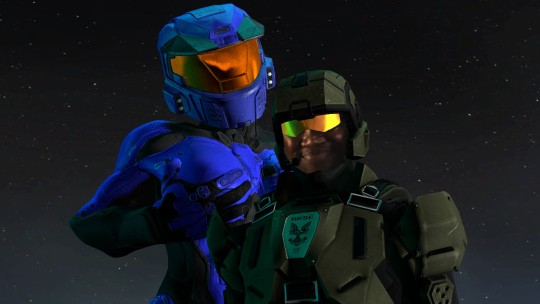
was gonna make it Johnson, but weirdly nobodys ported the Good Sergeant major to SFM
1 note
·
View note